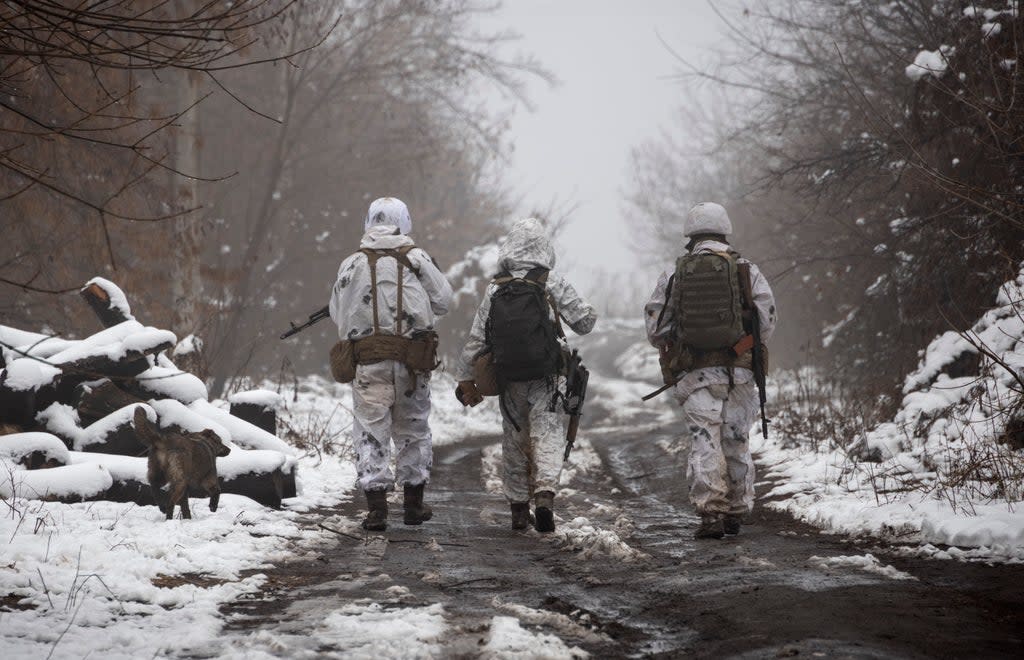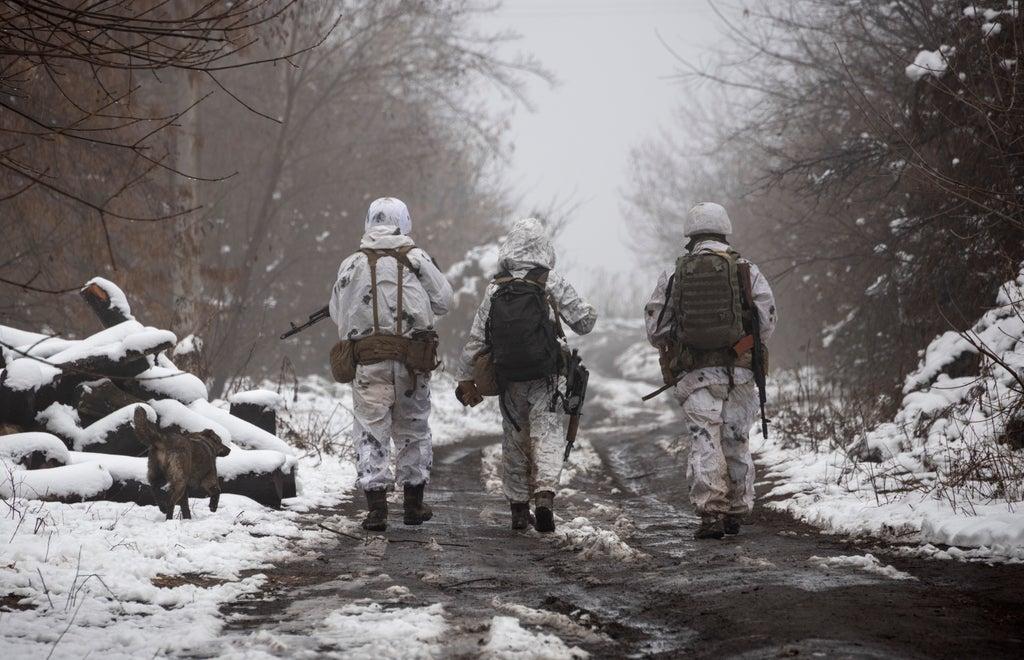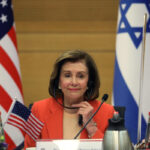
Russia has stationed an estimated 130,000 troops along its border with Ukraine this winter, increasing suspicion that an invasion is imminent.
Western powers have consistently warned the Kremlin against any aggression, insisting that there will be retaliation if it attacks its neighbour.
In the most recent developments, Russia has claimed to be de-escalating the situation and released a video that purports to show columns of military equipment and forces leaving the annexed Crimea region, with UK defence minister Ben Wallace saying the latest intelligence indicates that 60 per cent of Russia’s soldiers are still on the border of Ukraine, as is significant naval power at sea.
But Nato secretary-general Jens Stoltenberg has rejected Moscow’s claim, saying: “On the contrary, it appears Russia continues its military build-up.”
German chancellor Olaf Scholz has meanwhile become the latest Western leader to meet with Vladimir Putin in the hope of making further in-roads in the quest for peace.
The US, EU and UK continue to threaten Mr Putin with tough economic sanctions should he invade Ukraine, with EU Commission president Ursula von der Leyen warning that they will “bite very hard”.
So what is actually going on in Eastern Europe, where did it all begin and how might the crisis unfold?
How did the crisis start?
Going back eight years gives the current crisis more context.
Russia annexed Ukraine’s Crimean Peninsula in 2014 after the country’s Moscow-friendly president Viktor Yanukovych was driven from power by mass protests. Weeks later, Russia threw its weight behind a separatist insurgency that broke out in Ukraine’s east.
More than 14,000 people have died in the fighting that has been ongoing throughout the intervening years and which has devastated Ukraine’s eastern industrial heartland known as Donbas.
Both Ukraine and the West have accused Russia of sending troops and weapons to back the rebels but Moscow has denied the allegations, stating that Russians who joined the separatists did so voluntarily.
A 2015 peace accord – the Minsk II agreement – was brokered by France and Germany to help end the large-scale battles. The 13-point agreement obliged Ukraine to offer autonomy to separatist regions and amnesty for the rebels while Ukraine would regain full control of its border with Russia in the rebel-held territories.
The agreement is highly complex, however, because Moscow continues to insist it has not been a party in the conflict and is therefore not bound by its terms.
In point 10 of the agreement, there is a call for the withdrawal of all foreign armed formations and military equipment from the two disputed regions, Donetsk and Luhansk. Ukraine says this refers to forces from Russia but Moscow denies it has any troops there.
Last year, a spike in ceasefire violations in the east and a Russian troop concentration near Ukraine fuelled fears that a new war was about to erupt but tensions abated when Moscow pulled back the bulk of its forces after manoeuvres in April.
How is the situation at present?
In early December 2021, US intelligence officials determined that Russia was planning to deploy as many as 175,000 troops near Ukraine’s border in preparation for a possible invasion that they believed could begin in early 2022.
Kyiv had complained in December that Moscow has placed over 90,000 troops near from the two countries’ border, warning that “large scale escalation” was possible in January.
Additionally, the commander-in-chief of the Ukrainian armed forces said Russia has about 2,100 military personnel in Ukraine’s rebel-controlled east and that Russian officers hold all commanding positions in the separatist forces.
Moscow has repeatedly denied the presence of its troops in eastern Ukraine, not providing any details about its military numbers and locations, saying that their deployment on its own territory should not concern anyone.
Meanwhile, Russia has accused Ukraine of breaching Minsk II and has criticised the West for failing to encourage Ukrainian compliance.
Amid the acrimony, Mr Putin has rejected a four-way meeting with Ukraine, France and Germany, saying it is useless in light of Ukraine’s refusal to abide by the 2015 pact.
Moscow has also strongly criticised the US and its Nato allies for providing Ukraine with weapons and holding joint drills, saying that this encourages Ukrainian hawks to try to regain the rebel-held areas by force.
What might happen next?
The situation has now reached a state of intense stalemate as each side warily anticipates the other’s next move.
Moscow continues to deny talk of a Ukraine invasion while Western leaders have insisted that an incursion could be imminent.
US president Joe Biden has said he thinks Mr Putin will “move in” on Ukraine, while Boris Johnson has warned that “gloomy” intelligence suggested Moscow was planning a lightning raid on Kyiv.
Meanwhile, personnel from both the US and UK embassies in the Ukrainian capital have been ordered home – a move Ukrainian president Volodymyr Zelensky has labelled “overreacting.”
Nato and other Western leaders have threatened huge sanctions against Russia if it does attack Ukraine but it remains to be seen whether Moscow will take any notice.
Speaking at the White House last week, Mr Biden warned Mr Putin once again: “I don’t know that he knows what he’s going to do, and I think he has to realise that it would be a gigantic mistake for him to move on Ukraine. The impact on Europe and the rest of the world would be devastating, and he would pay a heavy price.
“I have been very, very straightforward and blunt with President Putin, both on the phone and in person – we will impose the most severe sanctions that have ever been imposed, economic sanctions, and there will be a lot to pay for that down the road.
“It will affect others as well, it will affect us somewhat, it will affect Europeans. But it will have a profound impact on his economy.”




